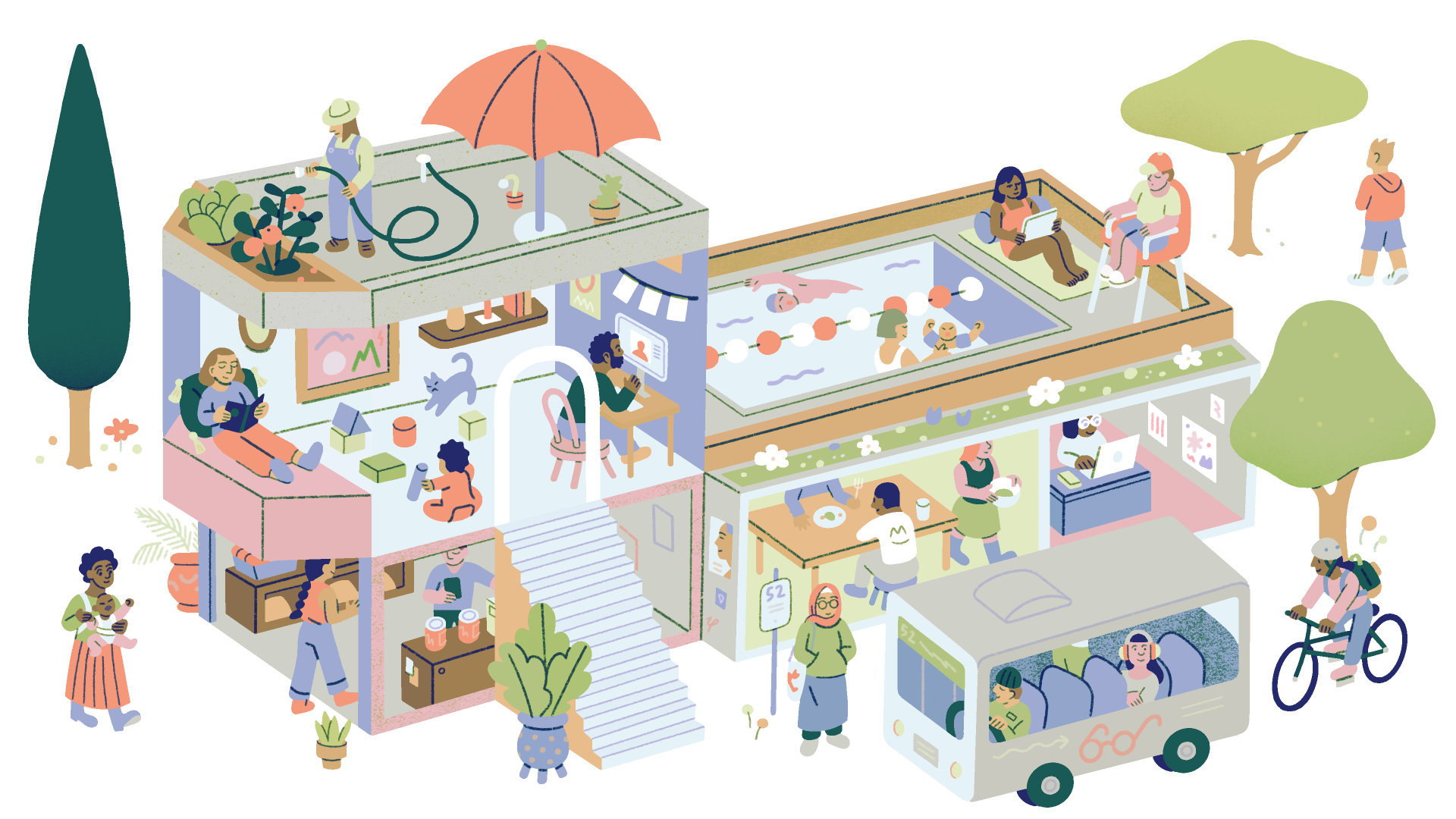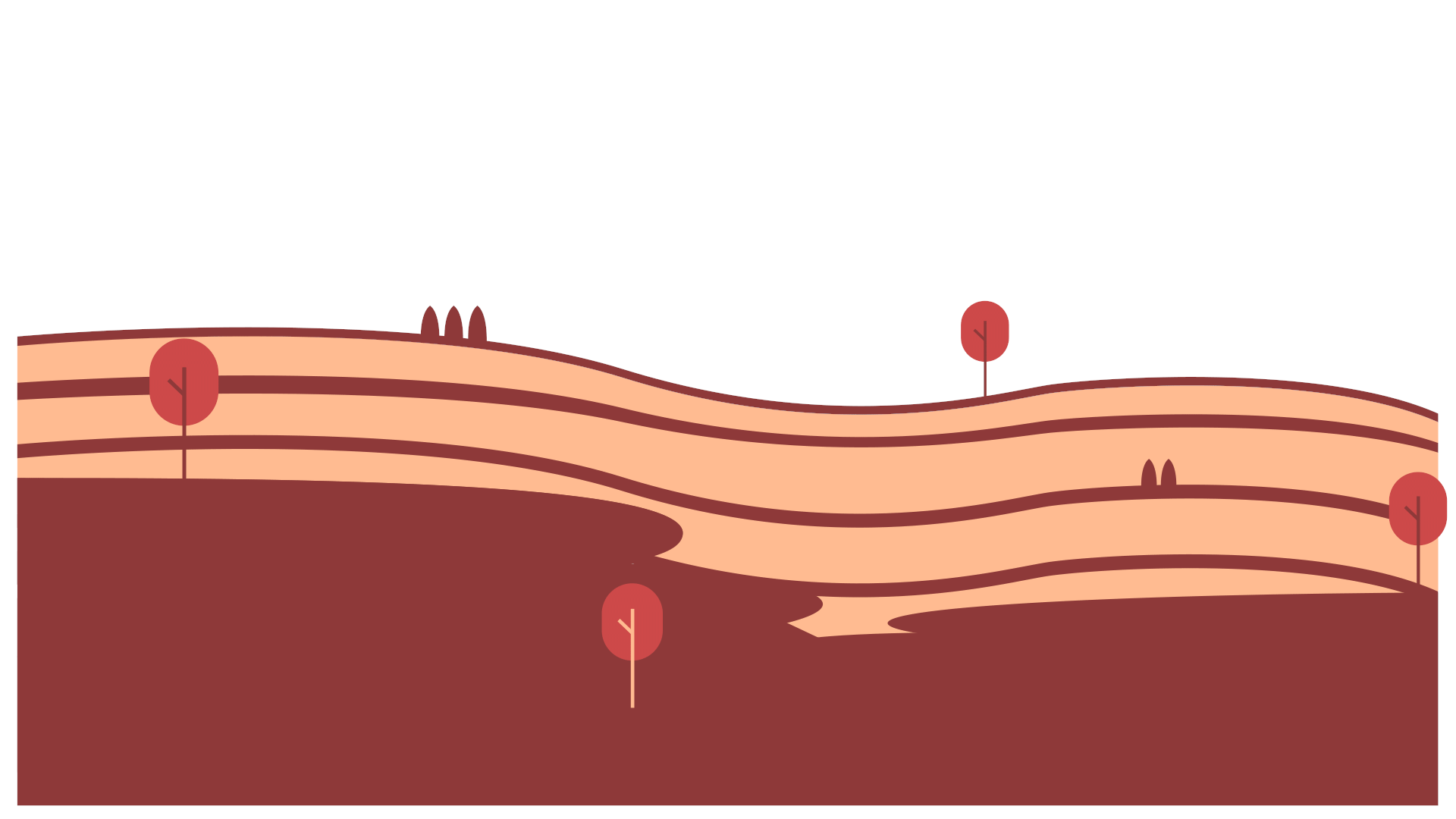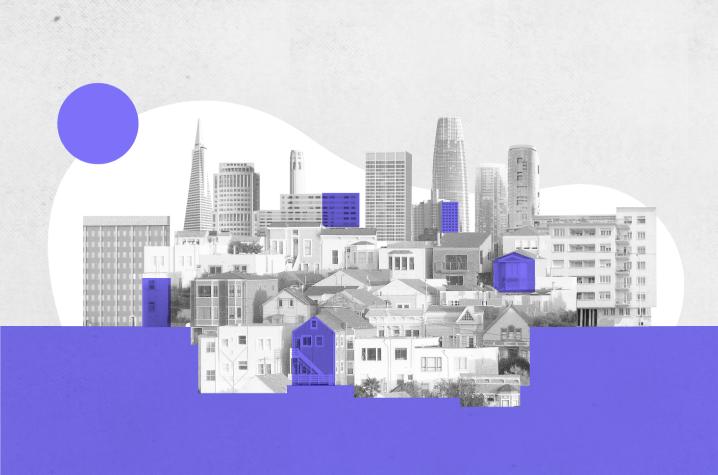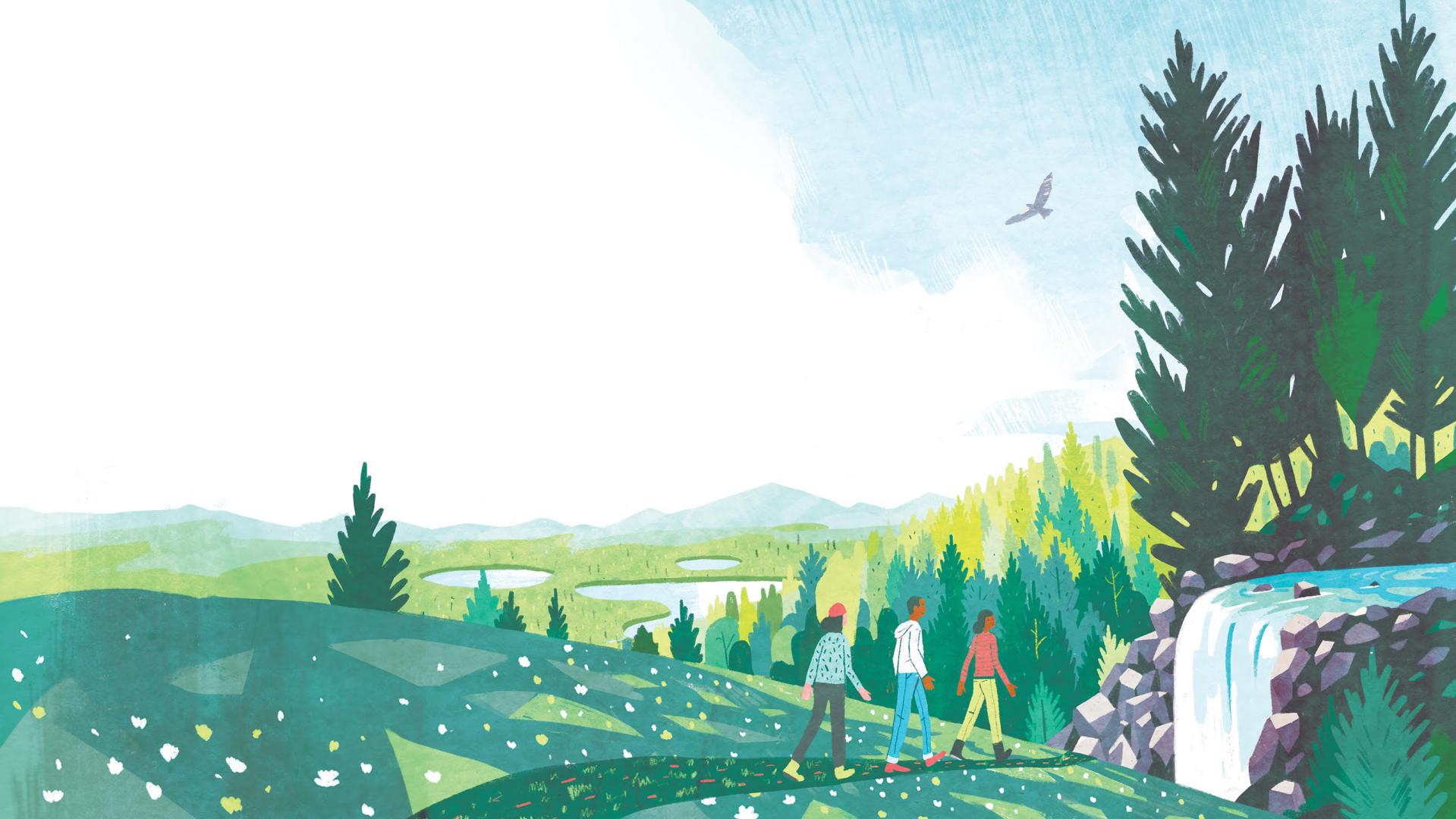We invite you to reimagine a Bay Area that grows up, not out.
Imagine a Bay Area where the word “growth” — so often associated with the world of tech and financial bottom lines — evolves to mean something else entirely. Instead of ever-expanding outward, we develop and cultivate what we already have. We see this shared region we call home grow into a place where everyone is housed and has access to quality goods and services, both public and commercial.
People of color are safe and welcome in streets and public spaces. Commuters have time for family and community life. Older adults get out and about with family and friends, aging in community. Kids walk to school together, expanding their sense of self and sense of place. Teens set off on bikes or on foot to creeks, lakes, beaches and parks. And all kinds of families, in all types of homes, live in community together.

Artwork: Sophia Foster-Dimino
Let’s use growth to bring new opportunities into existing neighborhoods by building jobs and housing around transit, along commercial corridors and where neighborhoods are already walkable.
Over the next 50 years, the San Francisco Bay Area is expected to gain as many as 4 million people and 2 million jobs. How can we welcome new residents and jobs without paving over green spaces or pushing out long-time community members? In SPUR’s civic vision for growth, the region adds 2.2 million new homes in areas that are well-served by transit; in commercial corridors and historic downtowns; in areas with great schools, jobs and amenities; and in the region’s existing suburbs. Previously exclusive neighborhoods become more affordable and welcoming to everyone. We can accommodate all of the region’s growth in these areas, without growing in open spaces and agricultural lands.
How can we create great places?
What if we grew in ways that made neighborhoods not only more equitable and more sustainable, but more livable and humanizing places to live and work? New growth can enable existing areas to become better places for people, retaining many of their essential qualities while supporting diversity and inclusion, public health, sustainable transportation and community life. Instead of spending hours commuting in a car, residents could access their daily needs — including supermarkets, doctors and childcare — within a 15-minute trip by walking, biking or transit. Growth can mean adding humanity, empathy, accessibility, convenience and a renewed appreciation for the region around us.


Artwork: Leah Nichols for the San Francisco Planning Department’s ‘2022 Housing Element’ video
“Growing up” includes protecting farms, ranches and the local food economy, as well as public open spaces and natural ecosystems.
Growing outward has many societal costs. It increases air pollution and the amount of time people spend commuting in their cars. It also exacerbates climate change, which in turn increases wildfire threats and flooding risks. These risks especially impact those with low incomes, creating more inequity in our region. At the same time, we need to support the protection of agricultural land and the viability of the Bay Area’s farming communities. We can accommodate the region’s housing and job growth without building in hazardous areas, agricultural lands and open spaces.

Artwork: Ryan Floyd Johnson
When we protect our parks and public spaces, we create stages for recreation, connection and belonging.
Part of what makes the Bay Area special is its incredible network of open spaces. These spaces offer refuge, reflection and — if designed right — inclusiveness. We need to continue to create and care for these places, be they parts of the regional open space network or small green spaces that anchor neighborhoods. In particular, we must engage communities in the design of public spaces and parks, so they become welcoming to those who have previously been excluded from them, including people of color and people with low incomes.
It’s time to rewrite the rules of growth.
By opening up previously exclusive areas and adding jobs and housing near transit and along commercial corridors, the Bay Area of 2070 could stem the rising tide of income inequality, neighborhood displacement and threats from climate change. Instead of pitting these priorities against one another, we can chart a path forward that addresses all of them, creating a future Bay Area where all people can thrive.